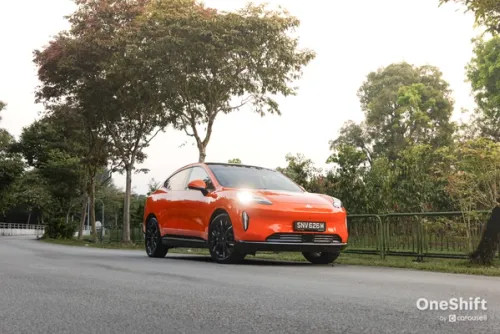Understanding what causes accidents
Motor-vehicle accidents have been making the headlines rather frequently in the past month, with the serious accident involving a lorry and a car along the PIE being the latest prominent example. Crashes involving large vehicles, motorcyclists, cyclists or pedestrians are often the ones with the most severe consequences, but that is not to say that car occupants are immune to the effects of heavy impacts. There have been about 20 fatalities on our roads in just the first quarter of 2013, the highest in any recent years. Can anything be done to keep the statistics in check? It is easy to attribute speeding as a key factor in accidents. In fact, enforcement against motorists who exceed the speed limit has always been a measure employed by the Traffic Police to deter motorists from travelling too fast. We do not need to have a comprehensive background in physics to know that higher speeds result in heavier crash impacts. However, there are other elements which contribute to accidents. Understanding these factors will put us in a better position to minimise risks and reduce the likelihood of accidents.

Not all accidents are preventable. The sudden appearance of a sinkhole, or a large branch falling in front of a vehicle are instances of pure misfortune. But such incidents account for a very small percentage. Most accidents are avoidable in one way or another. I can think of three main factors which have a part in accidents: the vehicle, the environment and the driver.

We can think of the vehicle as the weapon of the crime, if accidents were to be likened to illegal acts (driving with the intent to hurt is one, by the way). Analogies aside, the vehicle is the object of any accident, and its features are points which we can look at while considering how to reduce accident risk.
The type and nature of vehicle is a good starting point for this discussion. 4X4s have a higher centre of gravity than sedans, which means that they have more chance of rolling over when a sudden directional change is executed. Heavy vehicles such as container trucks have a greater mass than passenger cars, hence they require larger stopping distances. Motorcar drivers must take this into account when filtering into a lane ahead of a heavy vehicle – be sure to give the other driver more leeway to slow down or stop when approaching a red light junction. As for the drivers of these heavy vehicles, they should exercise more caution and responsibility on their part because of the sheer size of what they are piloting.
Visibility is another factor which is related to the type of vehicle being driven. The larger the vehicle, the greater the size of its blind spots. As fellow motorists, we can make the job of heavy vehicle and bus drivers easier by minimising the time we spend in their blind spots.
Never underestimate the importance of tyres – they are the sole contact points with the road itself. Keeping them in good shape is therefore crucial. Tyres are one half of the equation which determines how much mechanical grip is available while cornering (the other half is the road surface). When the grip limit is breached, the vehicle becomes uncontrollable, and its path unpredictable due to sliding. How much the driver steers and the speed at which he is travelling are contributing factors. Hence, the safest formula would be to take a corner at a reasonable speed with an accurate steering input delivered to properly-inflated tyres, since there is not much we can do about the condition of the road surface. Staying within the grip threshold allows the driver to be in control.
If a vehicle is not properly maintained, it will become a moving hazard, especially when it comes to crucial components directly affecting the operation of the vehicle (such as brakes and steering). Ensuring that one’s vehicle is in a road-worthy condition is a basic responsibility of any motorist.
Over the years, cars have become safer. Equipped with features such as ABS (anti-lock braking system), ESC (electronic stability control), blind-spot assist and pre-crash mechanisms to reduce the severity of accidents, modern-day vehicles are much more advanced than their predecessors. Despite this, we must not let our guard down and depend solely on technology to keep us safe.

Apart from knowing the characteristics and limitations of one’s vehicle, being aware of the environment which the vehicle operates in is an added safeguard against accidents. Environment factors include the weather, traffic density and road design.
Wet weather poses a challenge to drivers in terms of reduced visibility and surface grip. If we were to drive at the same speed as in the dry, we will have less time and ability to react to unexpected situations, since braking distances are increased.
Next, traffic density is a possible factor for accidents. As of December 2012, the total vehicle population was 969,910 according to the LTA. Just a decade ago, the figure was 706,956. When there are more vehicles registered, there is a higher chance that more vehicles are out on the roads at a given time. More vehicles mean that there is less road space per vehicle (assuming the rate of new roads being added does not keep up with the rate of vehicle growth).
As more vehicles ply the roads, there will be a larger number of interactions between them. Given that there is effectively less road space per vehicle, drivers have to be more vigilant as we can no longer expect the roads to be as clear as before. The higher figures may translate into a greater likelihood of incidents, even if it is not a certainty.
Likewise, road design is a component of accident risk. Sharp corners, steep elevation, narrow lanes and junctions with limited visibility mean that drivers must proceed with caution. Sometimes, due to geographical limitations, it is not possible to change the layout of the road. So if the speed sign says 40, there is probably a good reason why you should take the corner at that speed or less (because of the tight radius and possibly limited visibility around the sharp bend).

Ultimately, it’s down to the person behind the wheel who has the largest role in many accidents. Tailgating, weaving in and out of traffic, driving too fast for the conditions and being inattentive are main causes for crashes. Reckless behaviours such as running the red light and drink-driving are the most serious among the pile. Defensive driving is thus the best policy to an accident-free motoring experience.
A common reason given by drivers involved in accidents is that it happened too close in front and there was nowhere else to go. I cannot say for sure that pile-ups are entirely avoidable, but leaving oneself with enough time to react to situations ahead often keeps one out of trouble. Even if everything looks okay at one point in time, circumstances can change at the blink of an eye, therefore it pays to adopt an anticipatory approach. A good driver doesn’t just look at what is in front of him/her – he/she is aware of what is going on around and behind, so that in the event of anything unexpected cropping up, the best possible escape route can be taken.
By being alert and careful in manoeuvring, such as checking the blind spot before changing lanes, a driver leaves fewer things to chance. It is essential not to make others take evasive action because you did not make an effort to read the conditions, and in the worst case, it could spark off a chain reaction (remember the accident where a motorcyclist swerved to avoid a taxi on Farrer Road, only for him to lose control and get run over by another car?). Attempt to switch lanes early and not wait until the last possible moment to cut in.
Speaking of being early, motorists can avoid rushing through their journeys by departing slightly earlier. When we rush, we tend to be less patient and take bigger risks than we would usually do. Our brain’s capacity to perceive dangers and react to them is affected because we have become so fixated on the goal of getting to our destination as quickly as possible. As a result, safety is compromised.
In my previous write-up, I discussed about the lack of a permanent motorsports facility in Singapore. Still that is not an excuse to use the streets as a place to get our fix of adrenalin, or to boast how powerful our cars are. Remember, speed gives you less time to react and increases the severity of accidents. Racing drivers can drive fast on the track because it is a closed environment. With other motorists, cyclists and pedestrians around, our roads are definitely not meant for this purpose. This is the type of driving which the authorities are clamping down heavily on, but it still happens as demonstrated by the accident where a biker was killed along Bukit Timah Road while allegedly racing with his friend.
All in all, as motorists, we have a heavy responsibility in our hands – just like what we were told upon passing our driving test. Accidents happen when we let our guard down and leave things to chance. So let us work towards making our roads safer by having a proper understanding of the vehicle, the environment, as well as ourselves.
Credits:


Get the Best Price for your used car
from 500+ dealers in 24 hours

- Convenient and Hassle-Free
- Consumer Protection
Transparent Process
With No Obligation








